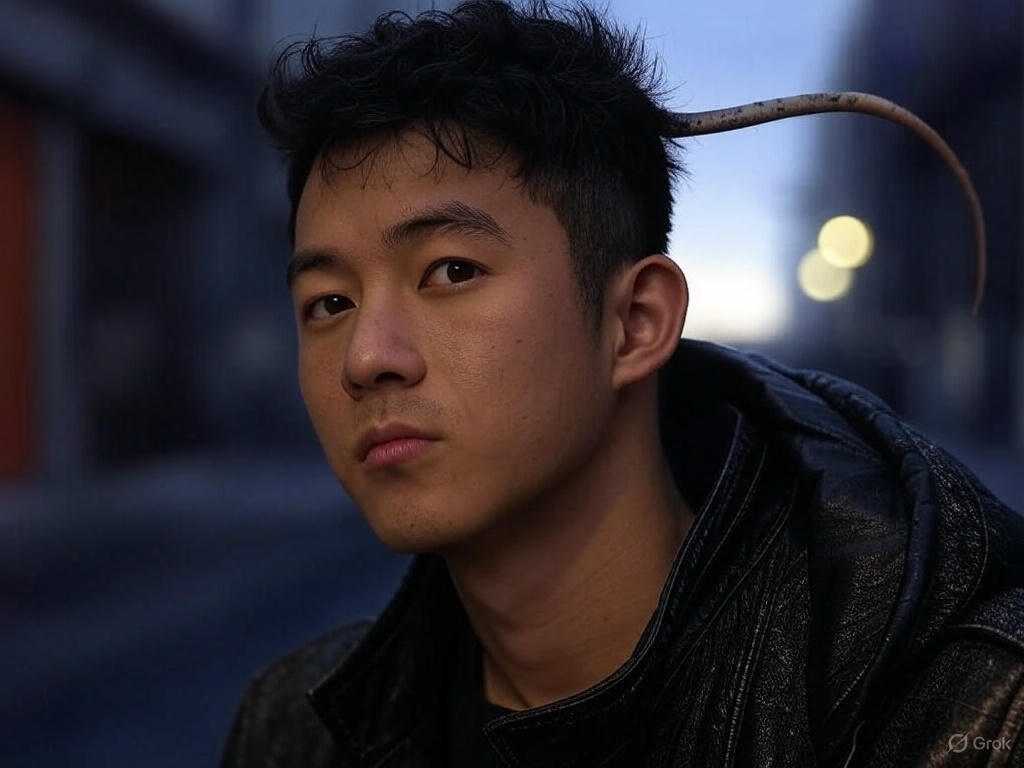From Rebellion to Runway: The Surprising Rise of Rat Tail Hairstyles
The Origins of the Rat Tail – A Symbol of Rebellion
The rat tail hairstyle, often dismissed as a quirky or outdated trend, has a history far richer than many realize. What began as a mark of rebellion in underground subcultures eventually found its way into mainstream fashion, defying expectations. This section explores the origins of the rat tail, tracing its roots to countercultural movements and examining why it became a symbol of defiance.
Early Appearances in Subcultures
The rat tail hairstyle first gained attention in the late 1970s and early 1980s, particularly among punk rock enthusiasts and street gangs. Unlike conventional hairstyles, the rat tail was intentionally unconventional—a thin, often braided strand of hair left long while the rest was cut short. This stark contrast made it a bold statement against societal norms.
Punk culture, known for its anti-establishment ethos, embraced the rat tail as part of its larger rejection of polished, mainstream aesthetics. Meanwhile, in some urban communities, the style was adopted as a badge of toughness, with wearers using it to signal their defiance.
Cultural Significance and Misconceptions
Despite its rebellious roots, the rat tail was often misunderstood. Critics dismissed it as unkempt or strange, failing to recognize its deeper cultural meaning. For those who wore it, the style was more than just a fashion choice—it was an act of self-expression and resistance.
In some Asian cultures, particularly in rural China, a similar hairstyle (known as the “queue”) had historical significance, though the modern rat tail was not directly derived from it. Instead, the Western rat tail emerged organically from youth-driven movements that valued individuality over conformity.
The Transition from Underground to Mainstream
By the mid-1980s, the rat tail began appearing in pop culture, thanks in part to musicians and actors who adopted the look. This gradual shift marked the beginning of its journey from a countercultural statement to a quirky fashion trend. However, even as it entered the mainstream, the rat tail retained an edge—an echo of its rebellious past.
The Rat Tail in Pop Culture – From Mockery to Acceptance
As the rat tail hairstyle entered the 1990s and early 2000s, its perception shifted dramatically. Once seen as a fringe trend, it began appearing in movies, TV shows, and music videos, often with mixed reactions. This section explores how pop culture both mocked and celebrated the rat tail, ultimately contributing to its staying power.
Celebrity Endorsements and Parodies
Some celebrities played a crucial role in normalizing the rat tail. Actors like Steven Seagal and martial arts stars occasionally sported the look, associating it with toughness. Meanwhile, comedies and cartoons used the rat tail as a visual gag, portraying wearers as eccentric or out of touch.
Films like Joe Dirt (2001) featured the rat tail prominently, turning it into a humorous yet oddly endearing trait. This duality—ridicule combined with fascination—helped the style persist in public consciousness.
Music and Fashion Crossovers
Hip-hop and alternative rock artists occasionally experimented with rat tails, blending them with other edgy hairstyles. While never a dominant trend, its occasional appearances in music videos kept it relevant. Fashion designers, too, began playing with the concept, incorporating sleeker, more polished versions into runway shows.
The Rat Tail as a Nostalgic Trend
By the 2010s, the rat tail had become a nostalgic reference, often revived in retro-themed fashion shoots or as a deliberate throwback. Younger generations, unaware of its rebellious origins, sometimes adopted it ironically, further cementing its place in style history.
The Modern Revival – High Fashion and Social Media
In recent years, the rat tail has experienced an unexpected resurgence, thanks in part to social media and high fashion’s love for unconventional trends. This section examines how the style has been reinterpreted for contemporary audiences.
Influence of TikTok and Instagram
Short-form video platforms have given the rat tail new life. Viral challenges and styling tutorials have introduced it to Gen Z, who often wear it with a mix of irony and genuine appreciation. The hashtag #Rattail has garnered millions of views, proving its enduring appeal.
High Fashion’s Take on the Rat Tail
Luxury designers have reimagined the rat tail in avant-garde ways, incorporating it into high-end collections. By blending it with modern cuts and textures, they’ve transformed it from a kitschy relic into a bold fashion statement.
Why the Rat Tail Keeps Coming Back
The rat tail’s cyclical popularity speaks to its versatility. Whether as a rebellious symbol, a nostalgic nod, or a high-fashion experiment, it continues to evolve, proving that even the most unconventional styles can stand the test of time.
The Future of the Rat Tail – Will It Stay or Fade Away?
As fashion trends come and go, the rat tail remains a wildcard. This final section speculates on its future, analyzing whether it will maintain its niche appeal or disappear once more.
Generational Shifts in Perception
Older generations may still associate the rat tail with its rebellious roots, while younger wearers see it as a fun, temporary style. This divide ensures that its meaning will keep evolving.
Sustainability and DIY Culture
With growing interest in DIY fashion, the rat tail’s simplicity makes it an accessible trend. Unlike complex hairstyles, it requires minimal upkeep, aligning with modern preferences for low-maintenance looks.
Final Thoughts on the Rat Tail’s Legacy
Whether loved or mocked, the rat tail has secured its place in fashion history. Its journey from rebellion to runway demonstrates how even the most unconventional trends can find acceptance—and sometimes, even admiration.
As style continues to cycle through old and new influences, one thing is certain: the rat tail, in some form, will always find a way back.
